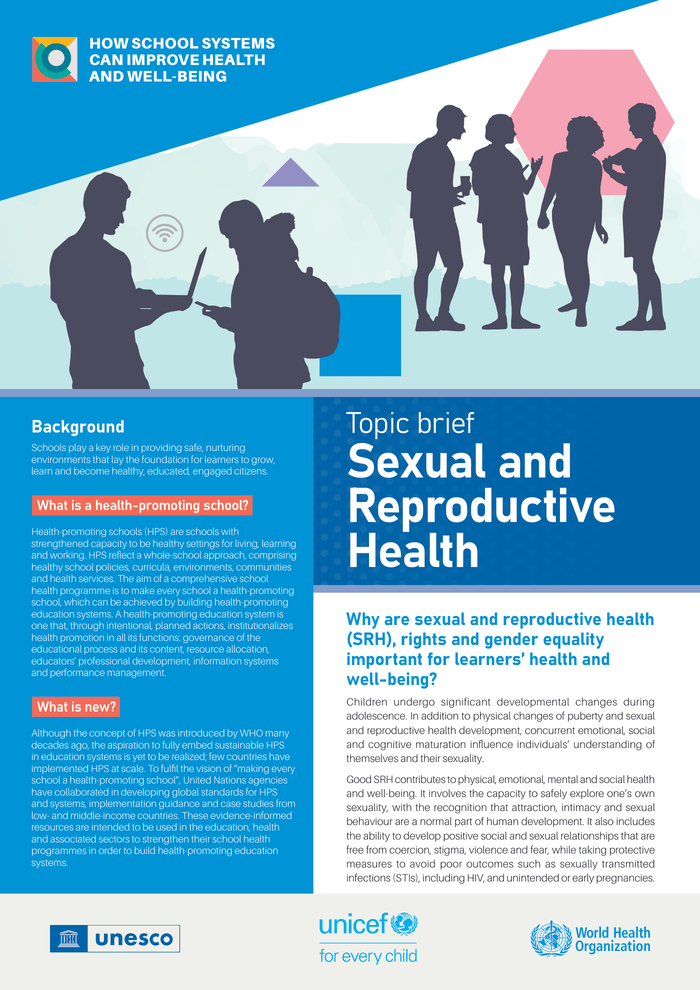Background
Schools play a key role in providing safe, nurturing environments that lay the foundation for learners to grow, learn and become healthy, educated, engaged citizens.
What is a health-promoting school?
Health-promoting schools (HPS) are schools with strengthened capacity to be healthy settings for living, learning and working. HPS reflect a whole-school approach, comprising healthy school policies, curricula, environments, communities and health services. The aim of a comprehensive school health programme is to make every school a health-promoting school, which can be achieved by building health-promoting education systems. A health-promoting education system is one that, through intentional, planned actions, institutionalizes health promotion in all its functions: governance of the educational process and its content, resource allocation, educators’ professional development, information systems and performance management.
What is new?
Although the concept of HPS was introduced by WHO many decades ago, the aspiration to fully embed sustainable HPS in education systems is yet to be realized; few countries have implemented HPS at scale. To fulfil the vision of “making every school a health-promoting school”, United Nations agencies have collaborated in developing global standards for HPS and systems, implementation guidance and case studies from low- and middle-income countries. These evidence-informed resources are intended to be used in the education, health and associated sectors to strengthen their school health programmes in order to build health-promoting education systems.

